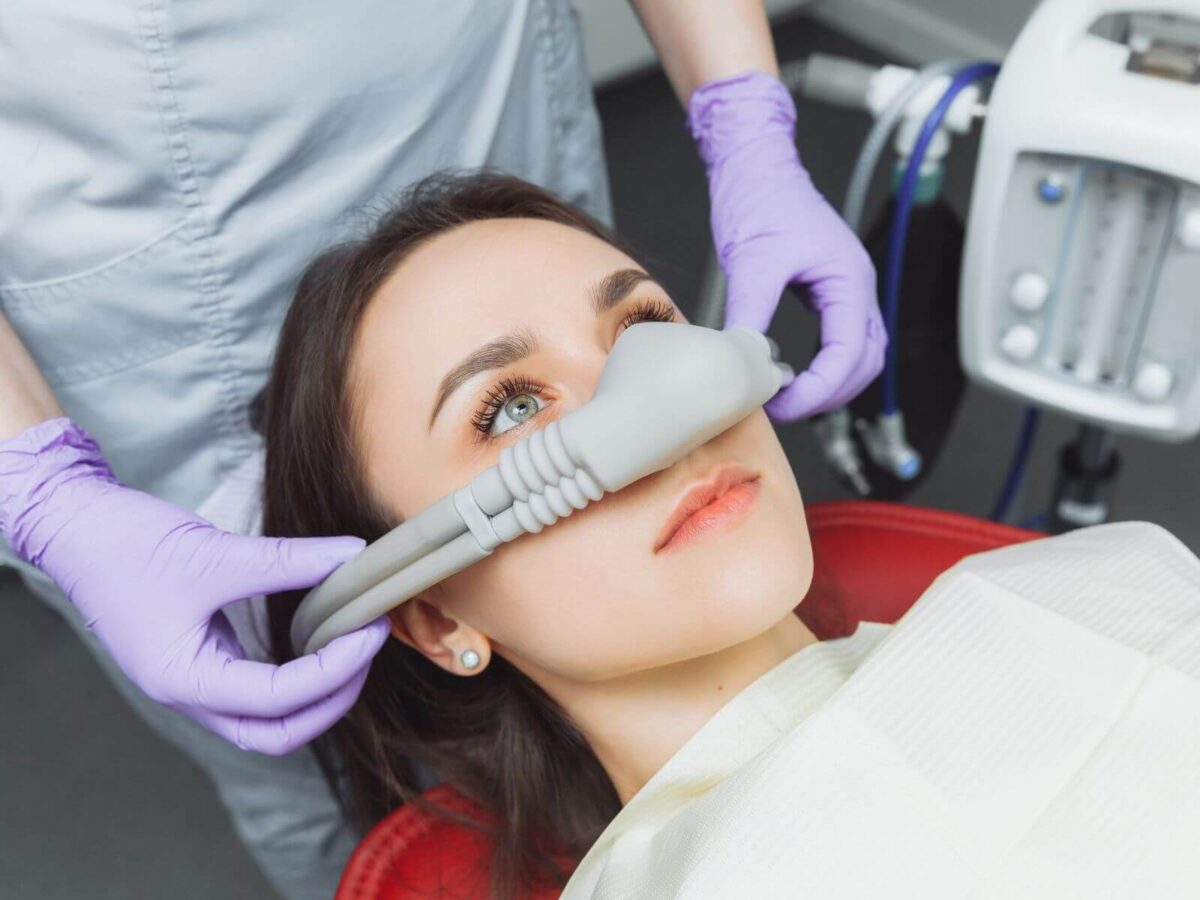Blog
Dental hygiene tips for healthy teeth & gums

The Role of Sedation Dentistry In Managing Dental Anxiety
Are you comfortable to visit your dentist? If yes, then you are among some of the few individuals. Most people are anxious to sit on the dental chair. And fear of pain or needles makes them more nervous about their visit. Sometimes, it is related to past experiences, while some people have phobias associated with dental visits.
This article is a guide to help you understand the role of sedation dentistry. You can learn how this type of dentistry can calm down patient nerves. This procedure is useful for those who hesitate to visit their dentist even when they have some serious issue. Let us explore this article to understand how this dentistry works.
Sedation Dentistry Explained
The purpose of sedation dentistry is to keep you comfortable during dental procedures. People with dental anxiety can use this procedure to undergo lengthy treatments. Dentists use nitrous oxide, or oral conscious sedation, to make you feel relaxed. Only a few dentists are specialized with certifications to perform this procedure.
Sitting is a compact space while your dentist is using sharp instruments in your mouth seems scary. Most people fear that it might pain a lot. This often leads to the fear of sitting calmly in front of the dentist. These are the responses of a patient with dental anxiety.
A dental expert with special certifications can use the twilight sleep method. This will make you insensitive to pain without losing consciousness. Here are some benefits one can get from sedation dentistry:
- Reduced Pain Sensitivity
- Amnesia Effect
- Improved Cooperation to perform lengthy surgical procedures
Who Needs Sedation Dentistry?
A little nervousness before a procedure is common for almost everybody. But how can your dentist determine that you need sedation dentistry? This procedure is suitable for only a limited number of patients. These include patients with:
- Dental anxiety.
- A fear of visiting the dentist.
- An overly sensitive gag reflex.
- A fear of needles or aichmophobia.
- Extreme tooth sensitivity.
- Feeling claustrophobic while sitting on the dental chair.
- Decreased sensitivity due to local anesthesia.
- Difficulty while controlling movements.
- Special needs include physical, cognitive, or behavioral.
Types Of Sedation Dentistry?
There is not one but many types of sedation methods for dental anxiety patients. The level of anxiousness, health history, and personal preference determine who needs what dentistry.
Here are some common types of sedation dentistry you can explore:
Nitrous Oxide
It is also called laughing gas. You need to inhale this through a mask. This will calm your nerves as soon as your body takes it. It quickly leaves your system. This means you can drive back after the procedure. The dentist controls the amount of nitrous oxide you need. He also adjusts the dosage accordingly.
Oral Conscious Sedation
A pill form a medication is always more convenient. It is taken an hour before the procedure. Most dentist recommend triazolam or diazepam. Some dentists also recommend Zaleplon and lorazepam.
If one is not comfortable with a pill form of oral sedation, your dentist might suggest it in syrup form. Midazolam oral syrup is a liquid sedation alternative. This sedation makes you groggy. You might feel sleepy, but continue to communicate with your dentist. You might need a friend or family member to drive you back home.
Intravenous IV Sedation
The deepest type of sedation is this. It is available at your dental office. It is injected directly into your bloodstream. People who have a fear of needles might avoid this as they will be anxious about the IV sedation needle as well. The dentist inserts the IV and keeps an eye on your heart rate. They also adjust the dosage in check, along with the blood pressure and oxygen levels.
Is Sedation Dentistry different from Anesthesia?
Yes, general anesthesia completely makes the patient unconscious. However, sedation dentistry can keep the patient calm yet awake if required. It depends on the dentist and patient’s preference to select which type of sedation method. However, general anesthesia is also used in some dental procedures.
General anesthesia can be used as a type of sedation during dental surgeries in a hospital. This sedation method is less popular. This is because one requires specialized training to administer general anesthesia. Most surgeons appoint an anesthesiologist to keep anesthesia dosage in check.
Risks Associated with Sedation Dentistry
Sedation dentistry is great for calming down a nervous patient. It keeps one comfortable during a lengthy dental procedure. But it might come with a small list of complications. Most of these are short-term risks you need to be aware of:
- Lingering drowsiness.
- It can be challenging to predict the effect of oral sedation
- medications.
- Dry mouth or xerostomia.
- Nausea
- Vomiting
- Headaches.
- Bruising from the IV.
Conclusion
Most patients who fear dental exams are children. As parents, you might avoid any type of sedation on your child, but sometimes it becomes essential. Sedation dentistry is a safe procedure. And is performed by licensed dentists who have specialized certifications. This is why the risks are limited and short-term.
A serious dental condition requires diagnosis and treatment. You need to trust your dentist to resolve your oral problems easily. If any questions arise, you can contact them on their emergency number. You can also visit Sinton Dentist TX to consult about your dental anxiety. With guidance from dental experts, you can restore your oral health.
It is better to resolve your problems despite dental anxiety. If ignored, minor oral issues can cause severe complications later. Book your appointment with Sinton Dentist TX Today!


